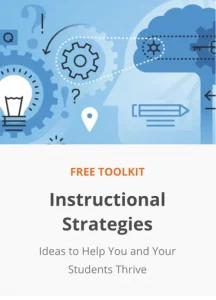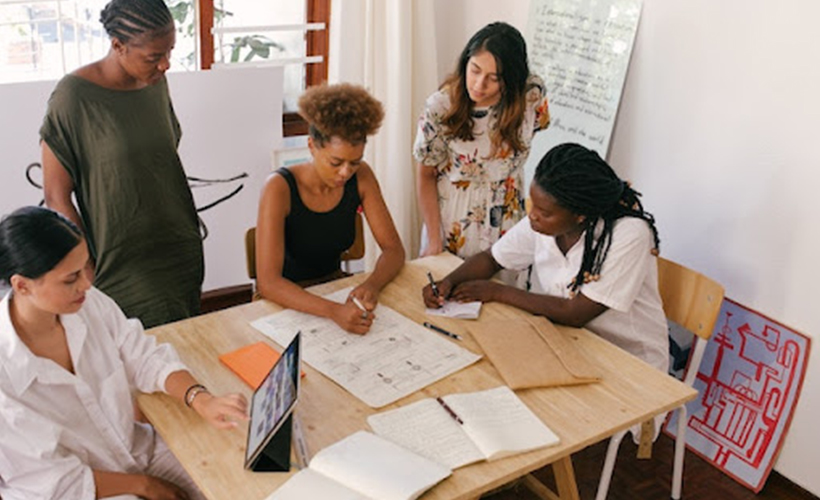Most academic librarians engage with students in various ways, and one of those meaningful and life-changing ways is offering an internship. One of my professional goals is to create a paid internship for someone interested in librarianship. If you have this as a professional goal or wonder how people in our field create an internship, this blog post will be helpful. I interviewed Adrianna Martinez, a Research & Education Librarian at SUNY New Paltz, about the digital history internship at her institution and what pedagogical frameworks guided the internship.
Jamia: Why was the digital history internship created at SUNY New Paltz?
Adrianna: At SUNY New Paltz, the history department runs an upper-division course in Community Memory. The student chooses which internship they are interested in and works with that internship supervisor throughout the semester for their chosen credit hours guided by communication among the student, supervisor, and in class with the professor of the course. Myself and Chrissy O’Grady, another librarian at SUNY New Paltz, built a student-driven internship taken by students varying from one credit hour to three credit hours. The aim of the digital history internship was to create a transdisciplinary semester-long space for history students to engage with librarianship and historiography in a critical way. I began this internship with Chrissy soon after beginning my work at SUNY New Paltz. It was an excellent opportunity for me to work directly with students during the pandemic when spaces were very limited.
 Jamia: What pedagogical frameworks were used to guide the student through creating a digital history project?
Jamia: What pedagogical frameworks were used to guide the student through creating a digital history project?
Adrianna: The core of the internship centers on the transdisciplinary nature of librarianship. In building this internship, it was important that the student was introduced to key concepts in librarianship and emerging concepts in critical pedagogy. Undergraduate students in the humanities should be encouraged to explore the connections among disciplines, and this internship was built to provide space for that exploration. When students reach this upper-division course, they have experienced research methods in history, meaning the frameworks for doing that research have been made visible to them. Students who choose to work with us in the Community Memory course are shown a critical lens to this research framework and the way that memory is built in the world of GLAM (galleries, libraries, archives, and museums). It was vital that we center critical pedagogy and literacy in our teaching structure as well as concepts that make that internship more malleable for the student, especially amidst the pandemic; care and open pedagogy were both essential.
Jamia: Can you offer any insights on creating a successful student internship?
Adrianna: From my perspective, successful student internship opportunities must be sustainable. We built this internship in order to connect with students in a way that not only introduces them to digital humanities—the tools and methodologies—but also critical literacy and librarianship. In this sense, it must be repeatable, malleable based on the student’s interest, and possible to maintain the same amount of engagement as advisors.
Without meaningful and impactful engagement from all parties, including the supervisor, in the student’s success both in the internship itself and beyond, there would be inherent limits to success. Internships are a medium that builds space for students to view their scholarship within the larger context of higher education and engage with where it fits within their interests, both in their undergraduate careers and beyond.
This internship would not have been possible without understanding the limitations I would have in attempting to run this internship by myself. I am a tenure-track faculty librarian with many other responsibilities besides my digital humanities work. It would not have been possible if it had not been for Chrissy O’Grady’s shared passion for doing this work and co-supervising with me.
Jamia: Can you share your future plans for creating another internship?
Adrianna: The internship is meant to introduce this world of librarianship and digital humanities to students and invite them into our field as scholars. Students that are doing work in literacy and contributing to the digital cultural record from a critical perspective have room in librarianship to share their voices. The future of this internship is in supporting students beyond their one
semester with us to build on their knowledge. For some students, this means simply having a deliverable that can be shared beyond their college career; for others, this project is something they continue to work on in grant-funded research and at conferences in varied academic fields. Shifting the focus to mentorship will allow for us to continue to build a community of scholars, as well as a continuation of the internship.
The future of the internship may expand to support more students working collaboratively and for fewer credits per semester. It would also allow for the digital archive to support more elements of interest from each student, expanding this format to engage in discussion with more perspectives and the ability for students to support each other in building work they are proud of.
 Adrianna Martinez is a Research & Education Librarian at SUNY New Paltz. She has a background in history, digital humanities, and critical library pedagogy. In her research and pedagogy, she centers the student experience and strives to create collaborative mentorship opportunities. In her career as a reference librarian, she strives to build pathways for identifying and building tools to navigate oppressive systems within and extending beyond librarianship.
Adrianna Martinez is a Research & Education Librarian at SUNY New Paltz. She has a background in history, digital humanities, and critical library pedagogy. In her research and pedagogy, she centers the student experience and strives to create collaborative mentorship opportunities. In her career as a reference librarian, she strives to build pathways for identifying and building tools to navigate oppressive systems within and extending beyond librarianship.
Below are some resources that help and support you if you want to create an internship at your library. Also, some of the resources discuss the benefits of internships.
Resources
- Redesigning an academic library internship program with equity in mind Reflections and takeaways by Karen Wang, Kae Bara Kratcha, Wei Yin, and Eamon Tewell
- Virtual Undergraduate Internships: One COVID-19 Side Effect that Academic Libraries Should Keep (Pre-print) by Damaris Juarez and Elizabeth Blackwood
- A Job Well Done: Bridging the Experience Gap with Internships by Eamon Tewell
See also:
- Critical Librarianship & Pedagogy: Interview with Jamillah Gabriel
- Critical Information Literacy: Interview with Symphony Bruce
- Library Instruction Development: Interview with Chelsea Misquith



